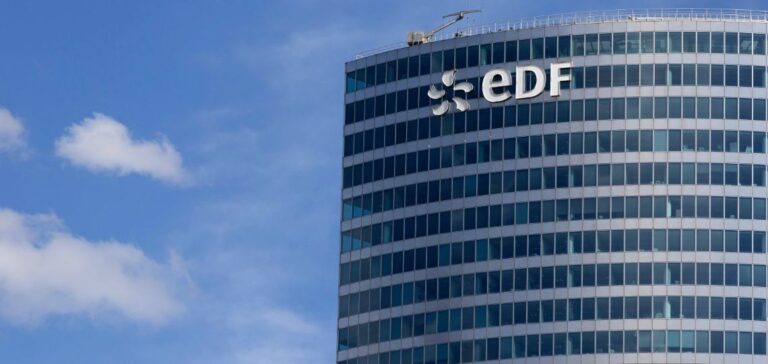Energy provider EDF is looking to capitalize on its extensive land portfolio by offering six industrial sites for the establishment of data centers. These locations, situated in Rhône-Alpes, Grand Est, and Île-de-France, benefit from existing power grid connections, a key advantage for digital operators.
A strategic asset for data center development
EDF has identified four initial sites with a total available power capacity of 2 GW. Two additional locations will be selected by 2026, bringing the total number of dedicated sites to six. These sites are part of the 35 locations labeled as “ready-to-use” by the government to attract new digital players to France.
A call for expressions of interest will be issued by the end of the month for the first four sites. EDF will retain ownership of the land and establish lease agreements for interested companies, with the possibility of integrating electricity supply offers tailored to the needs of future operators.
Addressing infrastructure energy challenges
The rapid deployment of data centers is a priority for digital sector stakeholders. According to EDF, one of the main challenges lies in land availability and grid connectivity. “Since our sites are former EDF production facilities, they are already equipped with 225,000 or 400,000-volt substations, eliminating the need for additional infrastructure-related delays,” explains Stéphane Raison, EDF’s director responsible for large-scale consumption site installations.
This feature could cut several years off the deployment timeline for data centers. The designated land represents approximately 150 hectares out of EDF’s 45,000-hectare holdings, making the company one of France’s largest landowners, alongside the state and the SNCF.
A growth driver for EDF
Beyond optimizing its land assets, EDF sees a potential revenue stream through land leases and electricity supply contracts with digital operators. With its hydropower and nuclear production recovering after historically low levels in 2022, EDF is aiming to expand its customer base.
The company plans to generate an additional 150 TWh of demand by 2035 to support the energy transition, with 20 TWh allocated to data center consumption. However, EDF estimates this figure could be exceeded with the 35 sites made available by both the state and the group.
Balancing digital expansion with industrial needs
While data centers drive digital growth, their energy consumption raises concerns. EDF emphasizes the importance of balancing land and energy resource allocation. “It’s not just about data centers; industrial sites also need to decarbonize,” says Stéphane Raison.
In this context, digital operators’ investments will need to be carefully managed to ensure energy availability for other key industrial sectors.






















